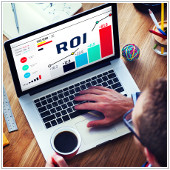When most people think of Disaster Recovery, the idea of Virtualization is likely far from mind. However, these two IT services are more closely related than the average business owner thinks. Virtualization can actually serve as Disaster Recovery Solution. Here’s a breakdown of how it does just that, and a few pointers to keep in […]
 When most people think of Disaster Recovery, the idea of Virtualization is likely far from mind. However, these two IT services are more closely related than the average business owner thinks. Virtualization can actually serve as Disaster Recovery Solution. Here’s a breakdown of how it does just that, and a few pointers to keep in mind if you decide to use Virtualization to backup your systems.
When most people think of Disaster Recovery, the idea of Virtualization is likely far from mind. However, these two IT services are more closely related than the average business owner thinks. Virtualization can actually serve as Disaster Recovery Solution. Here’s a breakdown of how it does just that, and a few pointers to keep in mind if you decide to use Virtualization to backup your systems.
As opposed to tape backups, Virtualization reduces recovery time in the event of a disaster. While tape backups can be reliable, using them to fully restore your system after a backup can be an excruciatingly long process. In fact, it can take up to two days to do just that. Think of all the business you could lose in those two days. Think of all the lost money in salaries you’ll pay out out to employees who aren’t working. Simply put, Virtualization is much quicker than tape backups when it comes to Disaster Recovery. Your entire system can be restored in four hours or less. How does this happen? Well, instead of rebuilding your servers, operating systems and applications separately, they exist safely off-site and can be brought back online via your virtual backup.
While the speed of virtualized backups might sound alluring, there are a few key points you should be aware of before moving forward. Here’s what you need to think about:
- Critical data - where do you want your critical data to be stored? Do you want it stored on tapes? Disk technologies? Or on your virtualized servers? Perhaps it’s best to spread your risk by backing up your critical data to multiple sources because, frankly, your business depends on this data. Regardless, find out what critical data you need to operate your organization and devise a plan to back it up as you see fit.
- Data to be backed up - Whether or not you decide to store your critical data on your virtual machines, figure out what data and assets you do want stored on them. Then designate specific virtualized servers to store these assets. In case a disaster does happen, you’ll know immediately where your backups live, and can retrieve your data quickly and get your business up and running again fast.
- Systems to be virtualized - Just as your business has critical data, you also have critical applications. Some of these may include email, Microsoft Office, and applications or software developed in house. Whether or not these applications qualify as critical for your business, identify the ones that do and focus your disaster recovery efforts on them. Like your data and servers, applications can all be virtualized and then safely stored off-site.
Curious to learn how else Virtualization can benefit your business? Interested in a dedicated Disaster Recovery solution? Call us today and discover how our experts can protect your organization and save you money.

 Make no mistake, healthcare costs are rising. For business owners who are generous enough to offer their employees insurance, this is undoubtedly a cause for concern. And you may wonder, is there any way to protect your employees and not go bankrupt in the process? Wearable technologies may be the answer. Here’s what you need to know about utilizing them in the workplace.
Make no mistake, healthcare costs are rising. For business owners who are generous enough to offer their employees insurance, this is undoubtedly a cause for concern. And you may wonder, is there any way to protect your employees and not go bankrupt in the process? Wearable technologies may be the answer. Here’s what you need to know about utilizing them in the workplace. You probably love your Android tablet. It can be a handy tool that allows you to communicate and get work done on the go. But what if this same beneficial tool was actually hurting your business? Yes, it’s possible. Like all electronic devices, your Android tablet has the power to severely disrupt your sleep. And as a business owner, this can have a dramatic effect on the growth and success of your organization. Here’s what you can do to prevent this.
You probably love your Android tablet. It can be a handy tool that allows you to communicate and get work done on the go. But what if this same beneficial tool was actually hurting your business? Yes, it’s possible. Like all electronic devices, your Android tablet has the power to severely disrupt your sleep. And as a business owner, this can have a dramatic effect on the growth and success of your organization. Here’s what you can do to prevent this.
 For many business owners, calculating the return on investment of a new technology purchase can be tricky. Some may not even see the value of calculating it, and therefore skip this step. This, however, can be a costly mistake to your business because if your technology isn’t saving you money, it’s costing you. Here are some tips to help you understand technology ROI and how to calculate it.
For many business owners, calculating the return on investment of a new technology purchase can be tricky. Some may not even see the value of calculating it, and therefore skip this step. This, however, can be a costly mistake to your business because if your technology isn’t saving you money, it’s costing you. Here are some tips to help you understand technology ROI and how to calculate it.